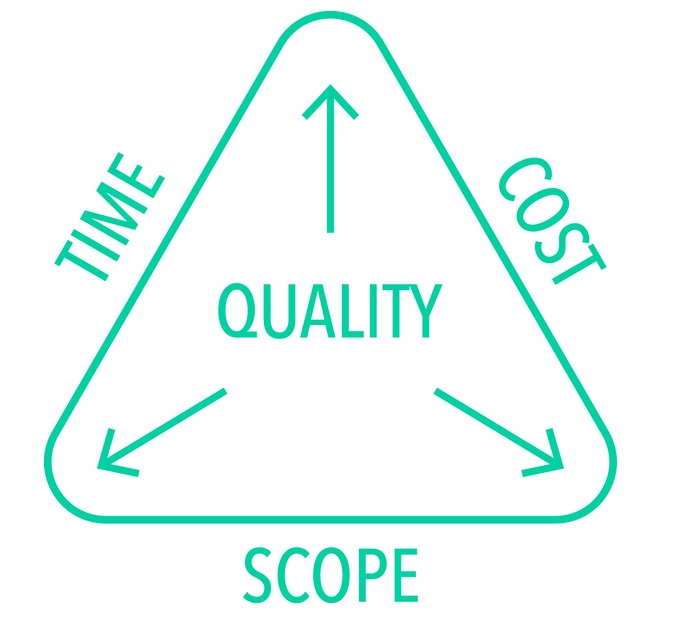There are three constraints faced in every project: Scope, Time, and Cost. They are a part of every project and though they can be limiting, when properly managed they should not affect a successful project outcome. These are often characterized in the Project Management Triangle.
Let’s touch upon each of the constraints.
Time
This is the most obvious one. Everything takes time. Each task, each feature, each report made takes time. How long these tasks take can vary based on the number and expertise of resources tackling them. You can save or add time based on the quality of work being produced.
The end game when thinking about time is hitting the deadline and delivering as planned. Sometimes in order to meet the deadlines, you will have to cut scope or add resources, increasing the cost.
Scope
Scope is about the product itself. What are we making? What features exist? What will they do? Video players, news readers, ad players: every feature you add is part of the scope. What you add to your product can help make it the best thing out there, but it can also add time and cost to the project by broadening the scope.
The grander the idea, the longer it can take and the more expensive the project becomes. When you’re under pressure to deliver, you may end up scaling back the scope in order to deliver on time and within budget. Alternatively, you may need to add resources to make sure the feature is completed on time.
Cost
The last constraint is explicitly tied to scope. Project budgets are typically set prior to projects and rarely change midway. But with changes in scope which extend the project, the cost of the project (most often) changes as well.
How to Overcome Project Constraints
Project constraints will always exist. Strong project managers can and should be ready for the following realities:
- Each project is different and they each have their own special blend of constraints
- If the scope can’t change than either the cost will or the timeline
- If the timeline can’t change than either the scope will or the cost
- If the cost can’t change than either the scope will or the timeline
The key to managing the constraints and ultimately having a successful project is TRANSPARENCY. If there is a decision that needs to be made, understanding the specific project constraints and how they affect the project is what will drive you to make the decisions that are right for the product.
This means every member of the project team and all stakeholders should be kept informed, priorities should be set, and everybody should fully understand the project objectives. When you know where the project can and can’t bend it will help you make the right decisions and deliver a successful end product.






